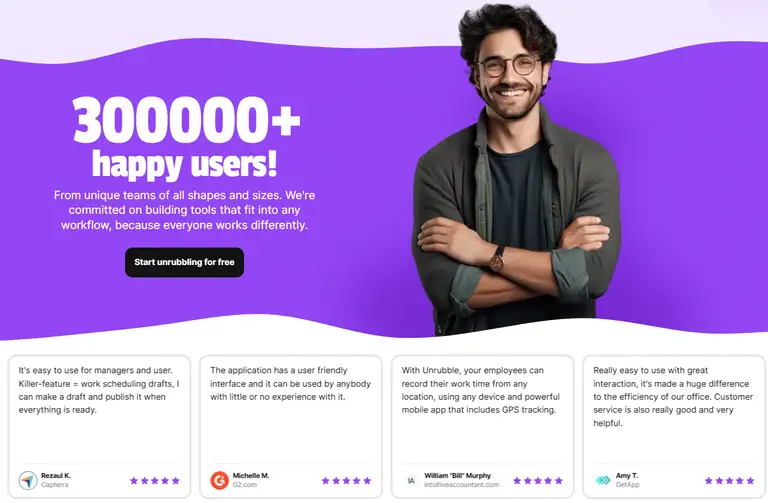Cold truth? Attendance tracking isn’t sexy. Nobody wakes up excited to log work hours or double-check attendance records. Yet here we are, still arguing over missing sign ins and pretending paper timesheets haven’t vanished under someone’s lunch.
The question is: do you actually need an employee attendance tracker, or is it just another piece of HR tech hype? For some teams, it’s overkill. For others, it’s the difference between payroll running smoothly and payroll turning into a monthly crime scene.
In this article, we break down when tracking is essential, when it’s not, the messy alternatives (hello, coffee-stained spreadsheets), and the best tool if you decide to take the plunge.
What is an employee attendance tracker?
Imagine the old punch clock, the kind you’d slam a card into at the start of a shift. Now strip away the clunky machine and the ink smudges. Replace it with something smarter. That’s an employee attendance tracker.
It’s a digital system built to track attendance and record work hours without forcing managers to wrestle with binders or overloaded Excel sheets. Instead of flipping through piles of paper or nagging people about missing attendance records, everything sits neatly inside a single user friendly tool.
Think of it like a student attendance register. Except these students run your business, and missing class isn’t about detention. It’s about lost productivity, payroll headaches, and sometimes even compliance issues. Skipped hours here and there can add up to real money.
Modern trackers also do more than just count heads. They capture dates, location, and even attendance habits over time, so you can see:
- who’s punctual,
- who’s pushing limits,
- and where time is quietly leaking away.
And with real time tracking, you don’t have to wait until the end of the week to notice something’s off.
In short, it’s attendance with context, records with meaning, and data you can actually act on.
When do you really need attendance tracking?
Not every business wakes up one morning and decides, “Today’s the day we buy an attendance tracker.”
Usually, the need sneaks in quietly. Deadlines slip, payroll starts looking suspiciously inflated, and HR gets stuck piecing together attendance records from half-broken Excel files.
That’s when you realize that tracking isn’t optional anymore.
Spotting problems with employee productivity
Productivity issues rarely announce themselves with flashing red lights. They show up in missed work hours, projects that drag, or that one employee who always seems to “arrive just on time” but never quite gets things done. It’s easy to blame attitude, but often it’s about attendance patterns.
When you track attendance, you start seeing the hidden story:
- who’s consistently present,
- who’s slipping in late,
- and who’s racking up more breaks than meetings.
Without proper tracking, you’re running blind. With it, you finally have the data you need to separate bad habits from honest mistakes.
Attendance data that helps HR teams
HR isn’t only about birthday cakes and onboarding sessions. They need hard numbers to keep the organization running hassle-free. Reports that tie together employee name, dates, and location reveal patterns that gut feelings can’t.
Take those infamous “traffic was crazy” excuses. With attendance data in front of you, you can see if traffic is magically targeting the same employee three times a week. HR teams thrive on clear attendance records, and with reliable data, their decisions stop being personal - they’re simply factual.
Managing accurate attendance for payroll
Here’s where things get messy: paychecks. Few topics spark as much tension as disputed work hours. Someone swears they stayed late, another insists they covered extra shifts, and suddenly you’re flipping through manual sign ins or old csv files like an amateur detective.
With an attendance tracker, those arguments vanish. Accurate records speak louder than opinions. Employees get paid what they worked, managers keep their sanity, and the organization avoids costly mistakes. In other words, payroll stops being a monthly battlefield.
When you don’t need an attendance tracker
Not every business needs a system logging sign ins and work hours down to the minute. Some setups run fine without tech doing the counting. In fact, forcing software on the wrong team can feel like using a sledgehammer to crack a nut.
Small teams and flexible work setups
Picture a team of five working out of the same café, or a startup crammed into a single loft. Do you really need software to confirm that Anna is sitting three chairs down, latte in hand? Probably not. A quick look around the room tells you who’s present and who’s “working from home” (read: still in bed).
Even in slightly bigger teams, flexibility changes the rules. If you’re measuring results, not hours, an attendance tracker may feel like overkill. In creative fields or early-stage ventures, attendance records might matter less than whether the pitch deck gets done.
Other apps you can use for attendance management
Then there’s the “hidden features” situation. Plenty of other attendance apps or project tools already bake in light weekly tracking. A task manager with check-ins, a chat platform that shows who’s online, or even a shared calendar with event names and dates can stand in for proper attendance tracking (at least for a while).
The trick? These tools weren’t built to track time in detail. They won’t catch subtle attendance patterns or spit out accurate records in clean reports. But if your organization is small, and HR is still a one-person army, those gaps might not matter yet.
Alternatives to employee attendance apps
If you’re not ready to jump into full software, you’ve still got options. They might not be glamorous, and they might break at the worst moment, but they exist.
Let’s look at the classics.
#1 Manual attendance data and spreadsheets
The mighty spreadsheet. Managers have been using Excel since the dawn of time, or at least since the 90s. You type in the employee name, the event name, and the dates, then export to csv files for “extra accuracy.”
Sounds fine until a formula breaks, the file disappears into the wrong folder, or someone overwrites the whole thing with “asdf.” Suddenly your “system” is a digital minefield. Spreadsheets can track attendance, sure. But they come with more chaos than order.
#2 Attendance percentage tracking without software
Some organizations go even simpler. Count heads once a day, maybe once a week, and track an attendance percentage. It’s like running student attendance checks in school: “Who’s here today? Who’s not?”
It works in small bursts, but here’s the twist: over time, those “small gaps” add up. Without a proper record of work hours, you can’t tell who’s consistent and where productivity is leaking. It’s like reading half a book and pretending you know the ending.
#3 Why attendance solutions can be better than paper methods
And then there’s the oldest fallback of all: paper. The stack of handwritten attendance records, crumpled timesheets, and sign ins scribbled with pen. It feels reliable until someone spills coffee on it or forgets to write the correct dates.
Paper doesn’t care about your organization’s payroll needs. It won’t generate reports, show attendance data, or track location. It just sits there, silent, waiting to betray you at the worst possible moment. Compared to that, even the simplest software feels like magic.
The best tool for employee attendance management
Let’s be honest. At some point, spreadsheets, paper sheets, and random other attendance apps all start to feel like duct tape on a sinking boat. They work until they don’t.
That’s where Unrubble steps in.

Why Unrubble is more than an attendance app
Unrubble doesn’t stop at tracking attendance. It pulls double (or triple) duty with time tracking, scheduling, PTO tracking, and even business trip management. Instead of juggling three apps, you get one. Think of it as your HR Swiss Army knife, minus the sharp edges.
And yes, it’s user friendly. No 200-page manual, no “call IT every time you log in.” Just click, tap, or swipe, and you’re off.
Real time check in and attendance solution
This isn’t your grandma’s punch clock. With Unrubble, employees can check in through mobile, desktop, or even a location-based clock. You want accurate records? How about face recognition with anti-spoofing? Good luck faking that.
Every sign in, every work hour, every date is logged in real time. Managers don’t have to wait for end-of-week surprises, and HR doesn’t have to play detective.
Benefits for HR teams and employee productivity
Here’s where Unrubble really shines. HR gets clean reports instead of messy csv files. Managers see attendance patterns without squinting at broken formulas. Employees stop arguing about their work hours because the data speaks louder than opinions.
The result? Payroll runs smoother, projects run tighter, and the whole organization breathes a little easier. You get more data, but without drowning in it.

Final take: do you need an attendance tracker or not?
Here’s the deal. If you’re running a five-person crew, and everyone sits within arm’s reach, you probably don’t need fancy tools. A headcount at the coffee machine works fine. Attendance records are in your head, and payroll is quick math.
But the moment your organization grows, the cracks appear. Projects start slipping, sign ins get forgotten, and suddenly the “we’ll track it in Excel” system collapses. You chase missing dates and pray your HR person doesn’t quit.
That’s when an employee attendance tracker stops being “nice to have” and starts being survival gear. Not because it’s trendy, but because it saves time, money, and a lot of arguments about work hours.
And if you’re going to pick one? Pick something that doesn’t just track attendance but actually gives you accurate records and clear reports. That’s Unrubble. It’s user-friendly, packed with features beyond tracking, and built for teams that don’t have time to waste.
So the real question isn’t “Do you need an attendance tracker?” It’s “How long can you afford to live without one?”







